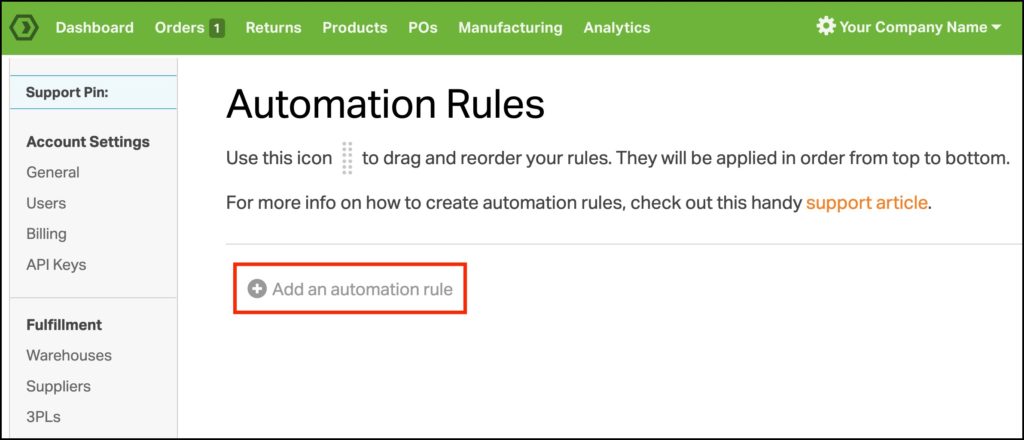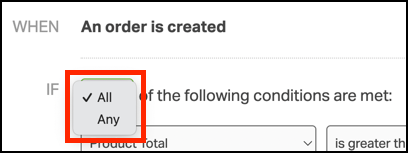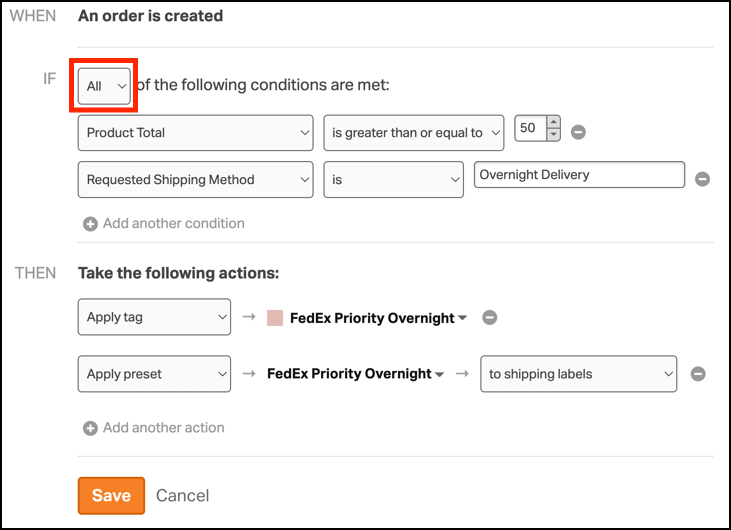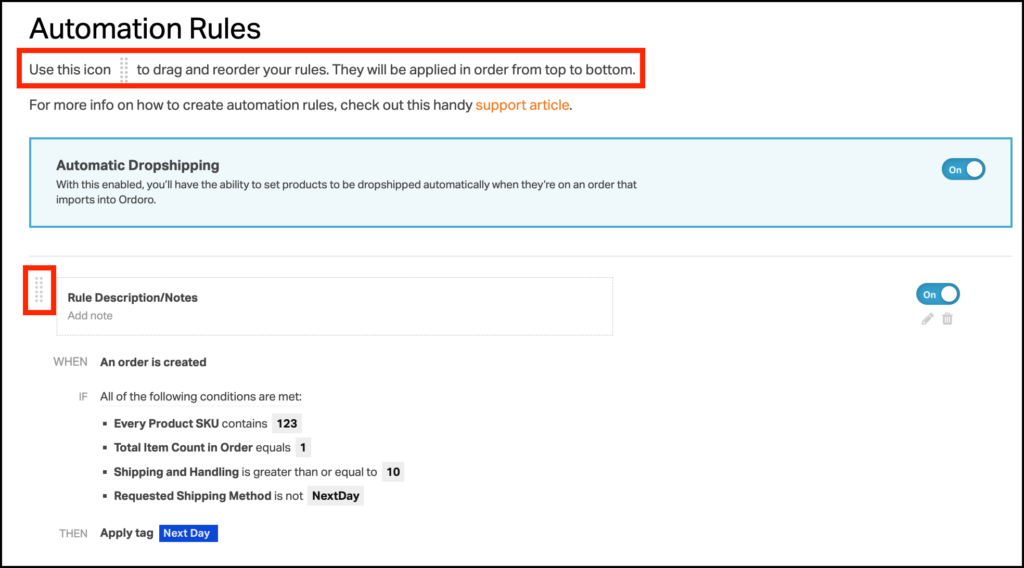If you’re an e-commerce seller, you know that shipping orders can be a time-consuming and repetitive task. Whether you’re shipping identical packages or need to insure certain products automatically, it can take up valuable time.
That’s where Ordoro comes in – our powerful automation rules can help speed up your workflow and improve efficiency by adding tags, presets, assigning warehouses, and much more. Learn how Ordoro can optimize your shipping process today!
Topics
What are Automation Rules?
- Rules can automate tasks to reduce errors and apply custom logic.
- Rules are applied when an order is created in Ordoro (either imported from a cart or manually created).
- A Rule is applied based on an IF statement. The IF statement determines which orders will be affected.
- A few examples are: “IF the customer’s Ship To name is…” or “IF any Product SKU on the order is….”
- Next is the THEN statement. The THEN statement applies the action to the order.
How to create Rules
1. Select your Company Name in the top right corner -> Settings.
2. In the left grey bar go to Automation -> Rules.
3. Click the grey link that says Add an automation rule.
4. From there, select the IF statement. See options below.
5. Choose from a list of available conditions. See the screenshot below.
- Note: The available conditions change depending on the IF statement.
- For example, conditions may be different if Requested Shipping Method or Order Grand Total is chosen.
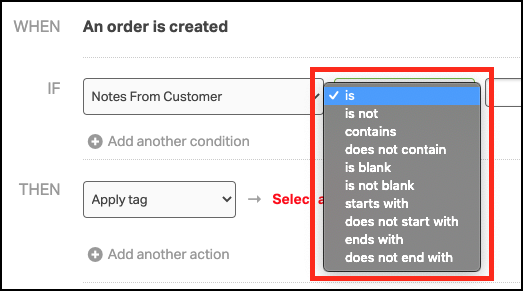
6. Complete the IF statement by entering the condition’s criteria.
- Note: This field is case-sensitive.
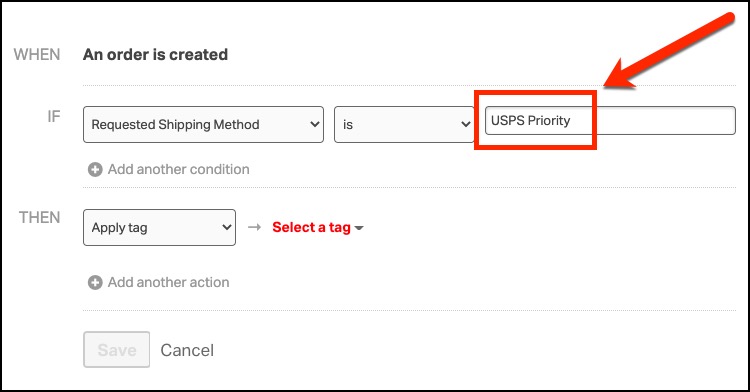
7. Multiple conditions can be either ANY or ALL conditions that must be met.
- Note: Rules can contain multiple conditions. Tags and/or shipping presets can be applied.
- For instance, you choose to ship high-value orders overnight via FedEx.
- IF the Product Total is greater than or equal to $50 AND the Requested Shipping Method is “Overnight Delivery”, THEN apply a tag AND a preset for FedEx Overnight Shipping.
- Since we want both IF statements to be true, then we make sure ALL is set on the rule.
8. Choose an action for the THEN statement. You can apply a tag, apply a preset, assign an order to a warehouse, allocate an order, or mark the order as shipped.
Note: Rules can contain multiple actions.
- For Tags, you can choose an existing tag or create a new tag. See this support article to learn about how to use order tags.
- For Presets, they must be set up before creating the rule. See this support article on how to set up shipping presets.
- For Assign to Warehouse, you can assign an order to be shipped from one of your Ordoro’s warehouses. See this support article to learn about warehouses in Ordoro.
- For Allocate, you can allocate an order’s inventory when the order imports. This is only available on the Enterprise plan. See this support article to learn how Allocation works.
- For Mark as Shipped, you can set to have the order to be Shipped in Ordoro. See this support article to learn how this feature works.
- For Dropship To, you can dropship an order to a supplier. See this support article for this feature. This feature is available on the Pro and Enterprise plans.
Reordering Rules
The order of automation rules is important, particularly with rules that include presets.
Preset rules are applied in a hierarchical order and can overwrite each other if there are multiple rules with different preset values for the same parameter, i.e. Shipper and Shipping Method. They will be applied in order from top to bottom.
Example:
- Three rules exist and each is tied to a different shipper.
- USPS Priority Mail
- FedEx Overnight
- UPS Ground
- An order is imported that fits each of the rules.
- Since UPS Ground is the last one on the list, that is the shipping method that is applied, not USPS or FedEx.
To reorder rules, select the sidebar icon and drag it up or down to change the order.
Automation Rules FAQ
- Can multiple rules apply to the same order?
- Yes they can.
- If multiple tag rules apply, then all tags will get applied to the same order
- If multiple preset rules apply to the same order, then they will be applied in a hierarchical order. See above for more details.
- Can I name a rule?
- There isn’t a way to title or name rules.
- However, each rule has a Rule Description/Notes field that can be used to add a brief message regarding the purpose of that rule.
- This field can be updated for active or inactive rules.
- Presets and tags applied via a rule can be changed when viewing the order. A rule will not prevent future changes to the order.
- Deleting an Automation Rule will not affect orders with tags and/or presets already applied.

